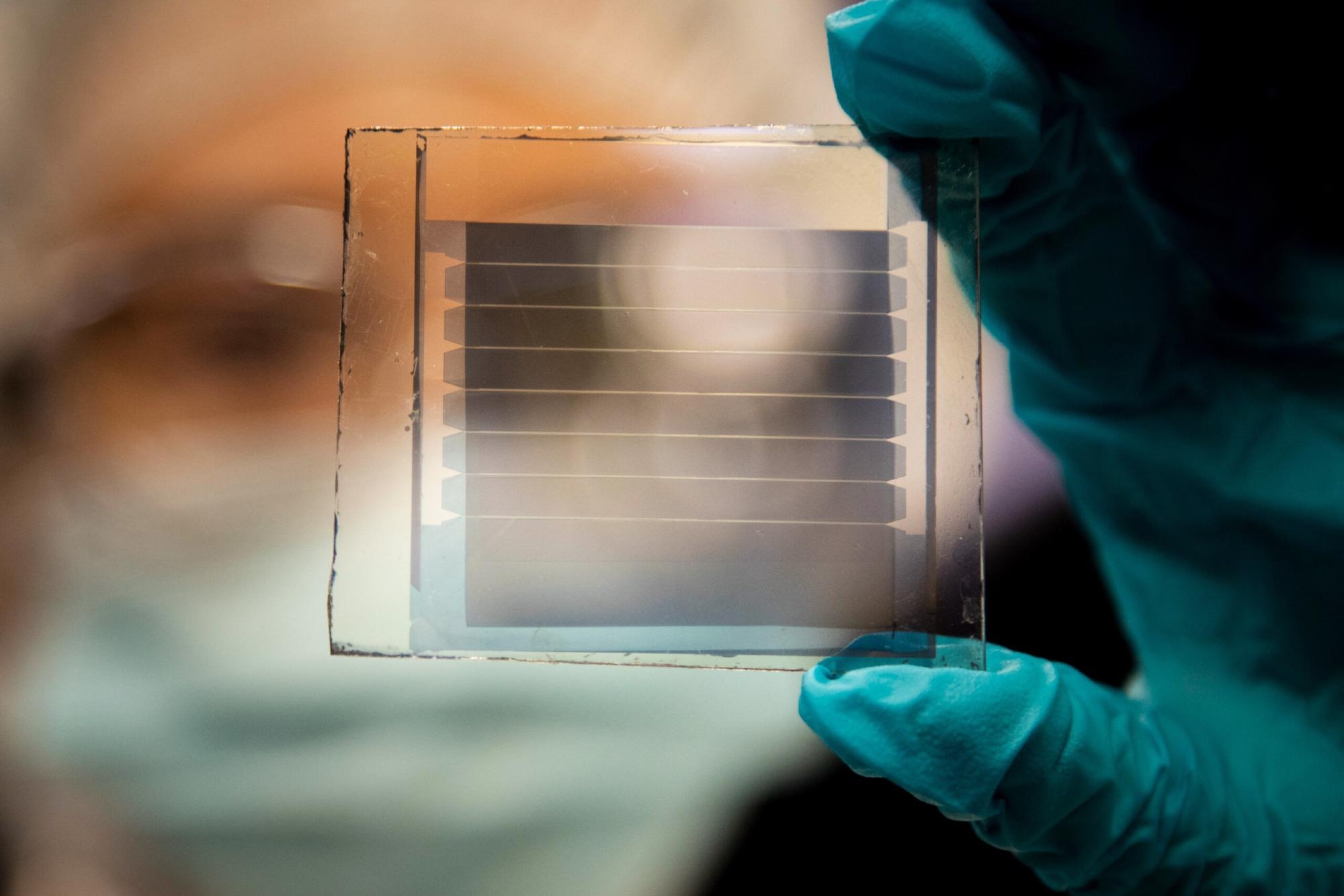In a study led by the University of Michigan, researchers have demonstrated that a new transparency-friendly solar cell design was capable of handling high efficiencies with 30-year projected lifetimes. This innovation could lead to windows that also provide solar power.
 Xinjing Huang, a doctoral student in Forrest’s lab, holds a 20% transparency, 30-year solar cell module that she built. The longevity of the design is a major step toward practical windows that provide solar power. (Image Credit: Robert Coelius, Michigan Engineering).
Xinjing Huang, a doctoral student in Forrest’s lab, holds a 20% transparency, 30-year solar cell module that she built. The longevity of the design is a major step toward practical windows that provide solar power. (Image Credit: Robert Coelius, Michigan Engineering).
Solar energy is about the cheapest form of energy that mankind has ever produced since the industrial revolution. With these devices used on windows, your building becomes a power plant.
Stephen Forrest, Study Lead and the Peter A. Franken Distinguished University Professor of Electrical Engineering, University of Michigan
While silicon is still topnotch when it comes to solar panel efficiency, it is not transparent. For solar panels that are window-friendly, scientists have been analyzing organic — or carbon-based — materials. The challenge faced by Forrest’s team was how to stop highly efficient organic light-converting materials from degrading rapidly upon use.
The strengths and weaknesses of such materials are governed by the molecules that move the photogenerated electrons to the electrodes — the entry points to the circuit that either stores or uses the solar power.
These materials are known commonly as “non-fullerene acceptors” to distinguish them from the stronger but less efficient “fullerene acceptors” composed of nanometer carbon mesh. Although solar cells are built with non-fullerene acceptors that include sulfur can realize silicon-rivaling efficiencies of 18%, they do not last for a long time.
The team, including scientists from North Carolina State University and Zhejiang University and Tianjin University in China, aimed to alter that. Through their experiments, they demonstrated that when the sunlight-converting material was not protected, the efficiency dropped to below 40% of its original value in the first 12 weeks under the equivalent of 1 sun’s illumination.
Non-fullerene acceptors cause very high efficiency, but contain weak bonds that easily dissociate under high energy photons, especially the UV [ultraviolet] photons common in sunlight.
Yongxi Li, Study First Author and Assistant Research Scientist, Electrical Engineering and Computer Science, University of Michigan
The paper has been published in Nature Communications.
The researchers examined the kind of degradation in those unprotected solar cells and realized that they only needed to shore up in a few areas. First, they would have to obstruct that UV light. To achieve that, they incorporated a layer of zinc oxide — a widely-used sunscreen ingredient — on the side of the glass that faced the sun.
A thinner zinc oxide layer close to the light-absorbing area helps carry the solar-generated electrons to the electrode. However, this also breaks down the delicate light absorber, so the researchers created a buffer with a layer of a carbon-based material called IC-SAM.
Furthermore, the electrode that attracts positively charged “holes” — spaces vacated by electrons — into the circuit can also react with the light absorber. To guard that flank, they incorporated another buffer layer made of fullerene shaped like a soccer ball.
Then, the researchers checked their new fortifications under various intensities of simulated sunlight, from the normal 1 sun up to the light of 27 suns, and temperatures of up to 150 ℉. They examined how the performance deteriorated under these circumstances and inferred that the solar cells would still continue working at 80% efficiency after three decades.
Forrest envisions that these devices will be “coming to a window near you” in the future. His team has already boosted the module’s transparency to 40%. They are confident they can attain 60% transparency.
They are also exploring ways to increase the efficiency from the 10% attained in the semitransparent modules seen in the study, closer to the 15% thought to be possible at high transparency. Since the materials can be made as liquids, the manufacturing costs would be moderately low.
A portion of the research was carried out in the University of Michigan’s Lurie Nanofabrication Facility. Forrest is also the Paul G. Goebel Professor of Engineering. He is a professor of physics, electrical engineering and computer science, and materials science and engineering.
The study was financially supported by the Office of Naval Research and the U.S. Department of Energy’s Office of Energy Efficiency and Renewable Energy. The license to the work is held by Universal Display Corp. Forrest has an ownership interest in Universal Display Corp, and the University of Michigan has a financial interest.
Journal Reference:
Li, Y., et al. (2021) Non-fullerene acceptor organic photovoltaics with intrinsic operational lifetimes over 30 years. Nature Communications. doi.org/10.1038/s41467-021-25718-w.